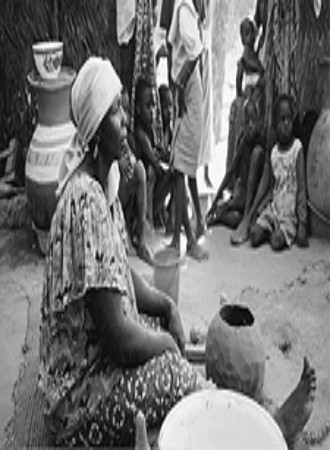
Women of the Sahel 1995
Distributed by First Run/Icarus Films, 32 Court St., 21st Floor, Brooklyn, NY 11201; 800-876-1710
Produced by Solera Films
A film by Paolo Quaregna & Souleymane Mahamane
VHS, color, 52 min.
High School - Adult
Sociology, Women's Studies
Date Entered: 11/09/2018
Reviewed by Reinhild Steingröver-McRae, Assistant Professor of German, State University of New York at BuffaloThe documentary features several women of the Sahel region in Niger at their work place: a peanut oil producer's courtyard, a potter's hole in the ground, a leather artisan's tent in the desert. The women work in the so-called "informal sector" of the country's economy, i.e. they produce goods and crafts on a small scale, with minimal technical or human help. The profits they earn by selling their pottery, mats, salt, plaster, oil or leather goods are meager but crucial for the survival of their extended families. While their husbands are often away in neighboring countries in search for seasonal work, these women use their great skills to provide for their many children.
The film shows six different women at work. Each woman is asked to explain the often painfully slow, labor-intensive process of producing her goods. The viewer watches in amazement e.g. how beautiful pottery is created from raw clay, without a workshop, using only a piece of wood and a stone. The film contains a minimum of voice-over interference. Footage is limited to the close observation of the women in the various chosen sites, without going into the general geographical, political or economic situation of Niger. This allows for a complete immersion into the routine of these tireless artisans at work. However, one is also left with many questions, the documentary doesn't answer. What effect does the independent craftwork and its monetary profits have on marital relations considering that marriages are commonly arranged when the girls are no older then 14 years at the most? What effect do the women's cooperatives have on the individual worker's regard for her craft or social standing?
The film offers an intriguing introduction to the topic and encourages further research. It is recommended for introductory women's studies courses or high school teaching. A little assistance to the uninitiated viewer would have been appreciated, e.g. in form of captions with the names of the women and the locations, as well as a map for general orientation.